UW honors the best of 1994
It wasn’t an easy decision, but somebody had to make it. So this winter, groups of faculty, students and alumni met to decide who are the best teachers, public servants and volunteers of the year. Sifting through hundreds of pages of nomination letters and supporting materials, the panels have settled on nine winners. Four are faculty who have won Distinguished Teaching Awards, two are TAs honored with Excellence in Teaching Awards, and three are members of the UW community recognized for their service by receiving either the UW Outstanding Public Service Award, the UW Recognition Award or the UW Alumni Association Distinguished Service Award. Brief profiles of the nine follow:
Daniel Graney
Distinguished Teaching Award
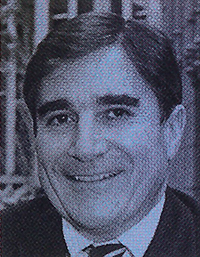 A bus swings by and a student’s buddies yank him out of the way of the protruding side mirror. The student narrowly avoids becoming another one of Biological Structure Professor Daniel O. Graney’s classroom examples. Graney has a cautionary tale for every bone in the body; this student just missed a facial fracture that happens to pedestrians who don’t pay attention to turning traffic.
A bus swings by and a student’s buddies yank him out of the way of the protruding side mirror. The student narrowly avoids becoming another one of Biological Structure Professor Daniel O. Graney’s classroom examples. Graney has a cautionary tale for every bone in the body; this student just missed a facial fracture that happens to pedestrians who don’t pay attention to turning traffic.
Graney, a winner of the 1994 Distinguished Teaching Award, collects an endless supply of injury anecdotes from the more than 3,400 physicians and surgeons who were his former students.
The anatomy professor links this massive volume of anatomical information to what students will practice in their clinics. Instead of simply showing the pelvic nerves, for example, Graney explains how the possible positions of a baby in the birth canal produce different kinds of pain, and how doctors and nurses can use their mental map of nerve distribution to make a mom in labor more comfortable.
One former student, now a psychiatry professor, says that Graney’s warm, reassuring style turns the cadaver lab, which could be intimidating, into a place where students feel free to make mistakes and admit their concerns.
Graney’s distinguished teaching skills are felt every summer in a program that encourages disadvantaged teenagers to study medicine. He puts the youths at ease by asking about their interests, such as football, and then integrates the subject with anatomy, such as showing why athletes get knee problems.
Graney is informally known as “The Man with the Golden Scissors” for his technical skills. Students are amazed at Graney’s agility in locating and isolating tiny structures. Several UW administrators and surgical specialists have been known to go to Graney’s lab for a refresher course.
A UW School of Medicine faculty member since 1966, Graney is a graduate of the University of California, Berkeley and earned his Ph.D. in anatomy from UC-San Francisco.
—Leila Gray, Health Sciences News and Community Relations
Margaret Heitkemper
Distinguished Teaching Award
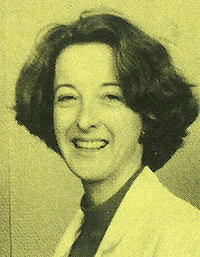 A teacher who gives lectures as entertaining as good movies? That’s how students describe Physiological Nursing Professor Margaret (Peg) Heitkemper, one of this year’s winners of the Distinguished Teaching Award.
A teacher who gives lectures as entertaining as good movies? That’s how students describe Physiological Nursing Professor Margaret (Peg) Heitkemper, one of this year’s winners of the Distinguished Teaching Award.
“When I graduate and leave the UW behind, I know that I will often think back to Peg, and be thankful for her guidance. My patients will never know our mutual indebtedness to this phenomenal woman,” says UW student Maggie Pinson.
What’s Heitkemper’s secret to success? “Humor is a key,” she says. “It’s also important to move out from the podium and put less distance between yourself and the students; that helps increase your connection to them.” Also part of her credo: don’t talk down to students, be willing to say you don’t know an answer, and give students a break after a spell of lecturing.
Heitkemper says teaching undergraduates “is one of my favorite things.” Research and teaching aren’t mutually exclusive. “I really believe research adds to my teaching,” she says. “You don’t have to be either a researcher or a teacher.”
“Her courses were the hardest within the School of Nursing,” says Fidelma Byrne, ’92. “She expected us not only to learn the material, but to apply it in a variety of clinical situations. We were not just to learn, but to understand.”
Heitkemper worked as a nurse’s aide at age 16 and started her professional career at St. Johns Hospital in Longview, Wash. She joined the UW physiological nursing faculty in 1981 and has been a professor since 1990. She earned her Ph.D. at the University of Illinois, her master’s at UW and her B.S. at Seattle University. She is a fellow of the American Academy of Nursing.
—Kathleen Klein, Health Sciences News and Community Relations
Raimonda Modiano
Distinguished Teaching Award
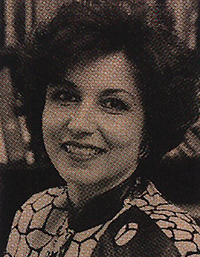 A syllabus so packed that it borders on the absurd. Papers returned to students three or four times until they are finally good enough to grade. These hardly seem like building blocks for rave reviews from students, but Raimonda Modiano, professor of English and comparative literature, makes it work. She demands excellence and she gets it. In turn, she receives praise from colleagues and students alike, which is one reason she is a winner of the 1994 Distinguished Teaching Award.
A syllabus so packed that it borders on the absurd. Papers returned to students three or four times until they are finally good enough to grade. These hardly seem like building blocks for rave reviews from students, but Raimonda Modiano, professor of English and comparative literature, makes it work. She demands excellence and she gets it. In turn, she receives praise from colleagues and students alike, which is one reason she is a winner of the 1994 Distinguished Teaching Award.
Modiano spends a great deal of time with students and in class preparation, often arriving on campus at 6:30 a.m. “Her annotations on my papers have led directly to two publications,” says one graduate student.
Modiano attributes the accolades to her three-part philosophy of teaching: first, use intellectually challenging material; second, have very high expectations; and, third, provide a support system so students can meet those expectations.
“I do not grade papers until they reach a certain level of proficiency; therefore, students do not have the option not to meet my expectations,” she says.
Her courses cover fertile intellectual territory. For example, English 205, “Methods, Imagination and Inquiry,” takes students through Plato’s The Republic; Dante’s Inferno; Kant’s Groundwork of the Metaphysics of Morals; Blake’s Songs of Innocence, Songs of Experience and America; Mary Shelley’s Frankenstein; Mauss’ The Gift; Freud’s Totem and Taboo; Girard’s Violence and the Sacred and Things Hidden Since the Foundation of the World; Aeschylus’ The Oresteia; and Camus’ The Stranger.
“You cannot present demanding material without organizing a support system; otherwise you would just demoralize the students,” Modiano says. “I tell students to do one thing with excellence so they get a sense of moving from one level to the next.”
Modiano places the same high standards on herself, an approach to life she learned at an early age. “As a Jew growing up in Romania, my goal was to be so good at whatever I did they couldn’t get rid of me,” she explains.
Her study of the friendship between Coleridge and Wordsworth led her to develop an interdisciplinary graduate course on “gift exchange and sacrifice,” a subject she calls “explosively interesting.” Students agree, flocking to the seminar from English, comparative literature, anthropology, music, dance and even nursing.
—Nedra Paulter, UW News and Information
Gregory Miller
Distinguished Teaching Award
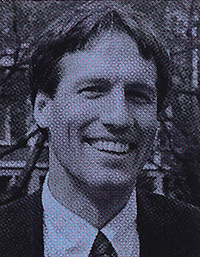 As a top student Greg Miller was frustrated. There had to be an explanation for why it took him so long, sometimes, to figure something out. “If someone had just explained whatever it was to me right in the first place, I wouldn’t have had to wait so long to understand it.”
As a top student Greg Miller was frustrated. There had to be an explanation for why it took him so long, sometimes, to figure something out. “If someone had just explained whatever it was to me right in the first place, I wouldn’t have had to wait so long to understand it.”
Today, Miller puts personal experience into action in his civil engineering courses. For him, explaining it “right” means making the classroom material his own. “I always try to make sure that I have three or four or even five different ways of thinking about every concept,” he says.
Miller, who earned his bachelor’s degree in engineering from the UW in 1980, is one of this year’s winners of the Distinguished Teaching Award. He joined the UW in 1984 after completing his Ph.D. at Northwestern.
Among Miller’s most popular classes is Engineering 220, “Mechanics of Materials.” “Traditionally, an engineering class of this nature would involve a lecture, homework, problems and exams,” he explains. In Miller’s class, though, students can call upon “Dr. Beam” and “Dr. Quack,” along with other custom computer aids.
With Dr. Beam, for example, Miller’s students can simulate stress levels on a beam and see what would actually happen. They can then turn to Dr. Quack for help in confronting their misconceptions.
Miller created many of his teaching innovations under the auspices of a National Science Foundation program to improve the quality of undergraduate engineering education. City College of New York, Penn State, MIT, Howard University and the University of Maryland are interested in using Miller’s materials.
These computer tools are a success for engineering undergraduate Lisa Brown. She praises Miller for providing students with “many methods for learning the course material.”
What advice does Miller give himself about teaching? “I always try to pose questions, to try to get my students to be as questioning as I am.
“Also, I try to keep in mind that I’m not teaching clones of myself, but instead people who perhaps think differently and presumably would make very good engineers—but maybe the system as set up doesn’t necessarily bring that to light. Those are the students I especially want to reach.”
—L.G. Blanchard, UW News and Information
Jon Herron
Excellence in Teaching Award
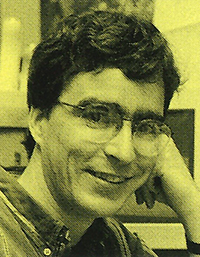 Zoology Chair Robert Paine had a problem. Four professors, each a likely candidate to teach an important and demanding course—introductory evolution—were not available.
Zoology Chair Robert Paine had a problem. Four professors, each a likely candidate to teach an important and demanding course—introductory evolution—were not available.
So he asked a graduate student to pinch hit. A graduate student to be a first-time lecturer on evolution?
It wasn’t just any graduate student. It was Jon Herron, who, in teaching courses from introductory biology to animal physiology, had already set a ridiculously high standard for teaching assistants.
In his 32 years at the UW, Paine says, he can’t recall another TA who matches Herron’s abilities. “He’s the most creative TA in this department’s history,” Paine says. He also notes that, to communicate with deaf students, Herron learned sign language.
Indeed, Herron’s teaching prowess was well known before he was chosen a winner of the Excellence in Teaching Award. He had taught biology for two years at Princeton (N.J.) High School and at the UW and was the first winner of an award given annually to the best TA in zoology.
“This was by far the best lecture class ever,” one student said of the evolution course. “His interest in the subject and sincere teaching was completely irresistible.” One student offered criticism of the course reading material: “Jon—write your own text for this class. Please.”
Herron, it turns out, was already taking the student up on it. He and Scott Freeman, on the staff at the Burke Museum, have completed the first chapter of an evolutionary biology textbook.
Herron seems to enjoy teaching as much as students enjoy being taught by him.
“When I ask the right questions, I can help somebody figure out something for themselves,” he says. “The fun part is watching the lights come on.”
He suggests that his work as a research scientist—he’s studying a form of algae called Vulvox—has helped his teaching. “In looking for answers, you look for interesting questions. But success isn’t measured by the answer you get. It’s based on how many more good questions the research raises.”
Likewise, he tries to “structure teaching around questions rather than answers” because thinking doesn’t magically occur at the end of a process of inquiry but during the problem-solving process itself.
—Bill Cannon, UW News and Information
Karen Zediker
Excellence in Teaching Award
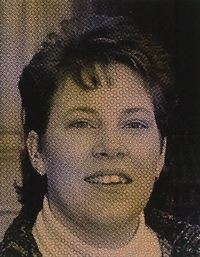 Karen Zediker became a teacher almost by accident; the “excellent” part was more deliberate. Zediker, a TA in speech communication and one of the winners of the Excellence in Teaching Award, had headed to college with the idea of becoming a stage manager.
Karen Zediker became a teacher almost by accident; the “excellent” part was more deliberate. Zediker, a TA in speech communication and one of the winners of the Excellence in Teaching Award, had headed to college with the idea of becoming a stage manager.
But when Montana offered her a teaching assistantship to finance her master’s degree, she naturally took it. “I discovered I really loved being in the classroom,” Zediker recalls.
Since coming to the UW to earn her Ph.D., Zediker has taught a wide variety of courses, including public speaking, advanced public speaking, interpersonal communication and interviewing. “The best thing about teaching is that I learn something new every quarter; I learn from my students,” she says.
She has the opportunity to do that through her “collaborative” style. Typically, she gets her students involved in an activity, after which she analyzes it with them. After the student-teacher analysis, the activity is linked back to communication theory. Some would say the approach is backwards, but Zediker doesn’t think so.
“By doing it this way, I learn how a whole range of very different students view material that I’ve known for a long time. I get new perspectives on what I know.”
She also gets an enthusiastic response from her students. Says one of those students in his recommendation letter, “Karen wrote the book on rapport.”
Zediker attributes that comment to the fact that she doesn’t “talk at” her students. “I don’t have one ‘right answer’ to give them, because communication is such a complex subject,” she says. “I encourage them to bring their life experience into the classroom, and we all learn from each other. What I want to give my students is choices, so they can ask—in any situation—’What is my best option?’”
Zediker completes her teaching assistantship this month and is working on her dissertation. But she expects another event—the birth of her first child in August—to happen before she completes her degree.
—Nancy Wick, UW News and Information
Philip Bereano
Outstanding Public Service Award
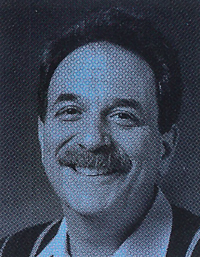 When Philip Bereano looks into the future, he sees a world in which people are trapped in “dull, boring, repetitive, dead-end jobs that have them watching the dials on the robot all day.”
When Philip Bereano looks into the future, he sees a world in which people are trapped in “dull, boring, repetitive, dead-end jobs that have them watching the dials on the robot all day.”
That’s just one of the possible consequences of what he calls the single greatest threat to democratic society, namely “the steady erosion of our civil liberties and democratic rights under the guise of technocratic efficiency.”
Tirelessly, and always passionately, Bereano blends his academic and civic interests into a potent force for the rights of ordinary citizens who feel confused, alienated and powerless by the proliferation of new technologies.
Public service is something every faculty member owes society as “the quid pro quo of guaranteed employment at a high-status job,” he explains. “Service is one of the components of our mission, and the University is a repository of incredible talents that are needed by citizens right outside our boundaries.”
In recognition of his efforts, a committee of faculty and alumni has named Bereano—UW professor of technical communication—winner of the 1994 UW Outstanding Public Service Award.
Technical Communication Chair Mark Haselkorn says, “His commitment to public service as a form of citizen empowerment embodies the highest ideals of the University.”
Whether serving as a public policy advocate for the rights of persons with HIV and AIDS; helping the state come to terms with nuclear waste; advising the City of Seattle on police-community relations; testifying before Congress on the social implications of human genetics; or speaking to numerous citizen and community groups, Bereano carries out his activities “with both passion and sensitivity,” adds Seattle Mayor Norm Rice, ’72, ’74.
Bereano, who joined the UW faculty in 1975 and is a Columbia Law School graduate, has a long and distinguished record of public service. A decade ago he helped found the Council for Responsible Genetics, headquartered in Cambridge, Mass., and continues to serve on its board of directors.
Through the council and other organizations, Bereano has worked to increase citizen understanding of new biotechnologies such as genetic testing and the release of genetically engineered organisms into the environment. He frequently speaks out against the Human Genome Project, warning of a vast invasion of privacy.
—L.G. Blanchard, UW News and Information
Mary Gates
Recognition Award
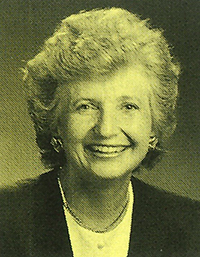 When Mary Gates graduated from the UW in 1950 with a bachelor’s degree in English and education, she planned to teach. Although she did not spend her career in the classroom, she has been a teacher to many individuals through her volunteer work locally, statewide and nationally. For her service to the University and the community, a panel of faculty and alumni has named Gates winner of the 1994 UW Recognition Award. Gates is best known at the University for her 18 years on the Board of Regents (1975-93).
When Mary Gates graduated from the UW in 1950 with a bachelor’s degree in English and education, she planned to teach. Although she did not spend her career in the classroom, she has been a teacher to many individuals through her volunteer work locally, statewide and nationally. For her service to the University and the community, a panel of faculty and alumni has named Gates winner of the 1994 UW Recognition Award. Gates is best known at the University for her 18 years on the Board of Regents (1975-93).
Gates says she began her volunteer work in a traditional way, “ringing doorbells for United Way.” Within a decade, she saw women’s roles begin to change as they moved into policymaking roles in both the public and private sectors. She served on the board of United Way of King County (1974-88), as well as many other non-profit and corporate boards. She served as a member of the board of directors of United Way International (1980-90) and was the first woman to chair that board (1985-87).
In the state of Washington, Gates is known for her volunteer work with Washington Gives, a statewide effort to promote philanthropy and voluntary service. Her service to the UW has a special place in her life, she says. Her mother and father were UW graduates. She met her husband, Bill, at the UW when both were active in student politics. One of their children is a UW graduate.
As a regent, Gates took a special interest in undergraduates. “It’s important that the citizens of this state have the opportunity for a first-class undergraduate education. We have to keep gifted students in our state and at the University of Washington,” says Gates.
What is she proudest of in her years as a regent? Successfully meeting the challenge the board currently faces, hiring a new president. Gates was president of the board the year the regents selected William P. Gerberding. Beyond that, Gates doesn’t want to single out any other highlights. “I enjoyed every aspect of my service,” she says.
—Antoinette Wills, Office of Development
Akio Hirao
UWAA Distinguished Service Award
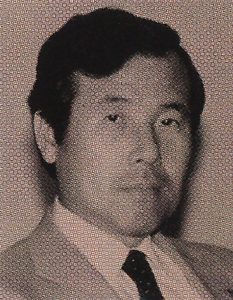 As an executive for Westin Hotels and Resorts in Asia, Akio Hirao, ’65, knows a thing or two about making people feel right at home—especially when it comes to the UW.
As an executive for Westin Hotels and Resorts in Asia, Akio Hirao, ’65, knows a thing or two about making people feel right at home—especially when it comes to the UW.
Through Hirao’s efforts, the Pacific Rim has become a home-away-from-home to the UW and the UW Alumni Association. Active with the UWAA in Japan since 1970, Hirao has always given of himself to the alumni association, from helping plan events to acting as a liaison for UW faculty traveling to Japan.
Thus, Hirao was an obvious choice to receive the 1994 UW Alumni Association Distinguished Service Award.
“The University of Washington has educated so many Asian people,” Hirao says. “It is only natural that we work to build a strong network here in the Asian countries to serve the University and the alumni. The University of Washington has done so much for Asia.”
Thanks to Hirao the UW’s presence in the Pacific Rim has never been stronger. For instance, when he first got involved with the Japan Club—the UWAA’s oldest overseas club—membership was largely made up of graduates from the 1950s and pre-war days. Since becoming president in 1985, the club has attracted younger graduates and boasts more than 600 members.
He was involved with the UW-Japan committee, created in 1990 to advise the University on strengthening the UW’s presence in Japan and to help with fund-raising from alumni and corporations. He acts frequently as the UWAA’s adviser in dealing with Pacific Rim countries, and was instrumental in planning the spring visit of President William P. Gerberding.
Hirao lives in Tokyo with his wife, Noriko. They have a daughter, Tomoyo, who attends Eastside Catholic High School in Bellevue; and a son, Shing, who attends St. Michaels University in Victoria, B.C.
“It is a great honor to receive such an award,” says Hirao, the first non-American alumnus to be so honored. “It is even greater to see that the future of the bond between the University and Asia will grow stronger.”
—Jon Marmor